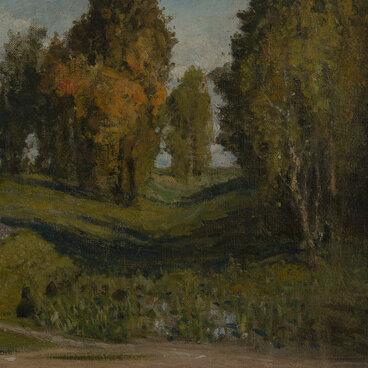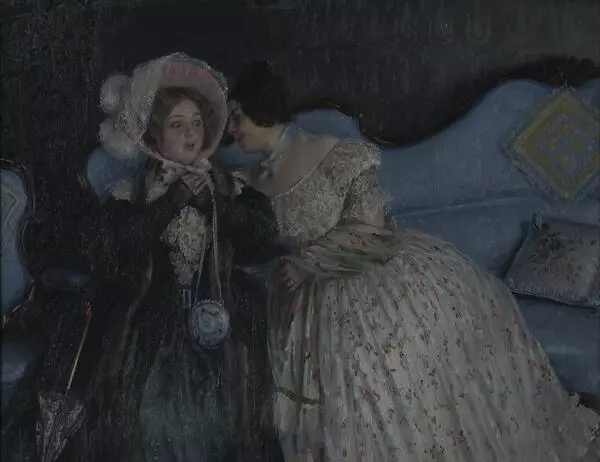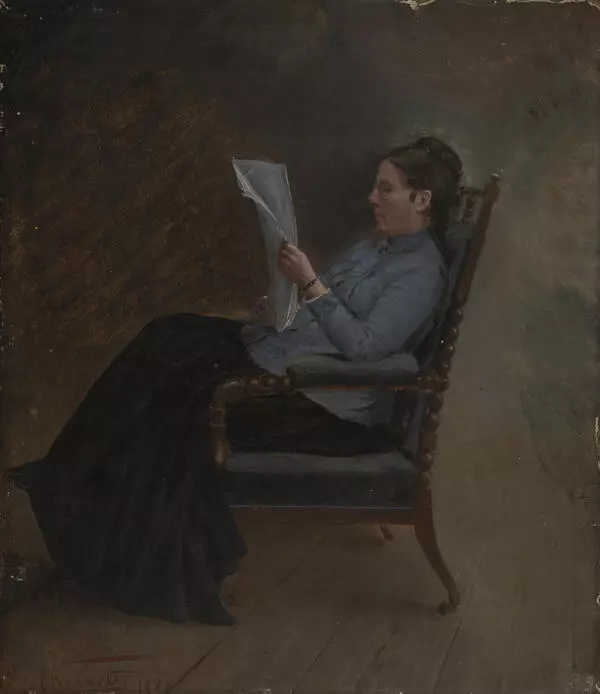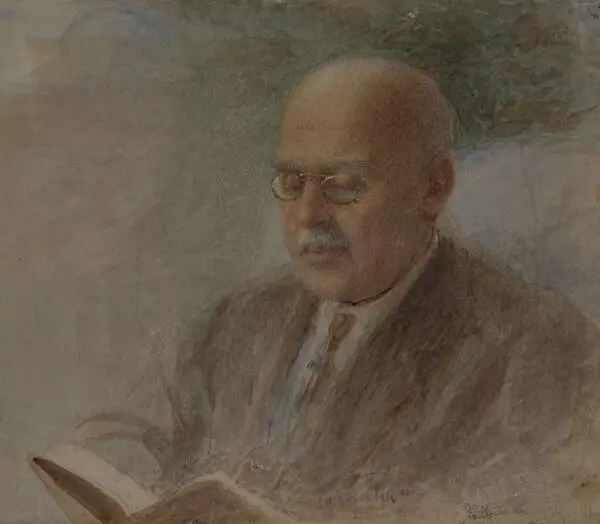The exhibition of the Ostrogozhsk Museum of History and Art features a painting titled “An Old Song” by Sophia Ivanovna Junker-Kramskaya. It depicts a young woman wearing clothes that were in vogue at the beginning and in the middle of the 19th century. The pink dress has a silky sheen, while the hat with ribbons emphasizes the charm of this young girl. She plays an old musical instrument — a domra — and sings a song.
The image created by the artist is imbued with romanticism and sends out the warmth of this small and cozy room. It is obvious that apart from capturing the dynamic moment of this young woman in the midst of a song, the painter also aimed to demonstrate an implementation of harmony, her own interpretation of it, a marvelous and majestic image. A search for beauty and harmony is one of the key motifs in the art of Sophia Junker-Kramskaya. Her drawings and paintings demonstrate that Sophia Ivanovna had a fine appreciation of the physical and spiritual beauty of people.
Sophia Junker-Kramskaya was a recognized portraitist. Before the revolution of 1917, she created a series of portraits depicting representatives of high society. The portraits achieved great success which helped Sophia Ivanovna receive a lot of commissions. Unfortunately, it is unknown what happened to many of her paintings that belonged to private collections. According to her contemporaries, including the people she was closest to, Sophia Ivanovna was a very musical, dignified, and graceful person who danced beautifully, was fond of singing and playing music, and spoke many foreign languages.
Throughout the years, Sophia Junker-Kramskaya and her brothers took care of the Ostrogozhsk Art Gallery: she communicated with the Academy of Arts and individuals, and made arrangements regarding the funding of the gallery’s construction and the forming of its collection. Until the mid-1920s, she maintained correspondence with the person who initiated the establishment of the museum — Gleb Yakovlev. During the Soviet period, she continued donating her works to Ostrogozhsk. In 1942, the museum caught on fire during an air raid, and a majority of the collection was lost. Only some of the works were evacuated and later returned to the museum.
The image created by the artist is imbued with romanticism and sends out the warmth of this small and cozy room. It is obvious that apart from capturing the dynamic moment of this young woman in the midst of a song, the painter also aimed to demonstrate an implementation of harmony, her own interpretation of it, a marvelous and majestic image. A search for beauty and harmony is one of the key motifs in the art of Sophia Junker-Kramskaya. Her drawings and paintings demonstrate that Sophia Ivanovna had a fine appreciation of the physical and spiritual beauty of people.
Sophia Junker-Kramskaya was a recognized portraitist. Before the revolution of 1917, she created a series of portraits depicting representatives of high society. The portraits achieved great success which helped Sophia Ivanovna receive a lot of commissions. Unfortunately, it is unknown what happened to many of her paintings that belonged to private collections. According to her contemporaries, including the people she was closest to, Sophia Ivanovna was a very musical, dignified, and graceful person who danced beautifully, was fond of singing and playing music, and spoke many foreign languages.
Throughout the years, Sophia Junker-Kramskaya and her brothers took care of the Ostrogozhsk Art Gallery: she communicated with the Academy of Arts and individuals, and made arrangements regarding the funding of the gallery’s construction and the forming of its collection. Until the mid-1920s, she maintained correspondence with the person who initiated the establishment of the museum — Gleb Yakovlev. During the Soviet period, she continued donating her works to Ostrogozhsk. In 1942, the museum caught on fire during an air raid, and a majority of the collection was lost. Only some of the works were evacuated and later returned to the museum.






